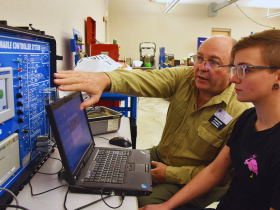Factory reset can be crucial when troubleshooting issues or preparing your MacBook Pro for resale. Whether you’re facing persistent software problems, need a fresh start, or plan to give away or sell your device, knowing how to perform a factory reset is essential. This guide will walk you through the entire process, ensuring you can confidently reset your MacBook Pro without any hitches.
The Need for a Factory Reset
Before resetting your MacBook Pro, it’s essential to understand why you might need to do it. A factory reset erases all data and settings, returning your MacBook Pro to its original state. This can be helpful if you’re experiencing persistent issues that software troubleshooting hasn’t resolved or want to start fresh with a clean system. Additionally, if you plan to sell or give away your MacBook Pro, a factory reset ensures your data is completely removed, protecting your privacy.
Backing Up Your Data
One of the most critical steps before a factory reset is backing up your data. A factory reset will erase all data on your MacBook Pro, so it’s vital to ensure that you have a backup of essential files and documents. You can use Time Machine, Apple’s built-in backup feature, to create a complete system backup. Alternatively, you can manually copy your files to an external hard drive or use a cloud storage service. Once your data is backed up, you can proceed confidently, knowing your files are safe.
Signing Out of iCloud and Other Services
Before resetting your MacBook Pro, signing out of iCloud and other Apple services is essential. This step helps to ensure that your MacBook Pro is removed from your Apple ID account and that your data is not associated with the device after the reset. To sign out of iCloud, go to System Preferences > Apple ID > Overview > Sign Out. You must also sign out of other services like iMessage and FaceTime. For iMessage, open the Messages app, go to Preferences > iMessage > Sign Out. For FaceTime, open the FaceTime app, go to Preferences > Settings > Sign Out.
Deauthorizing Your MacBook Pro
Another critical step is deauthorizing your MacBook Pro from your iTunes or Apple Music account. This ensures that your device can no longer access your purchased content and allows you to authorize a new device if needed. Open the Music or iTunes app, go to the Account menu, select Authorizations, and then choose Deauthorize This Computer. Enter your Apple ID and password when prompted, and your MacBook Pro will be deauthorized.
Restarting in Recovery Mode
It would help if you restart your MacBook Pro in Recovery Mode for a factory reset. This mode allows you to access the tools necessary for erasing your hard drive and reinstalling macOS. To enter Recovery Mode, restart your MacBook Pro and immediately hold down the Command (⌘) + R keys. Hold the keys until you see the Apple logo or a spinning globe. Once you’re in Recovery Mode, you’ll have access to various utilities needed for the reset process.
Using Disk Utility to Erase Your Hard Drive
With your MacBook Pro in Recovery Mode, open the Disk Utility application from the macOS Utilities window. Disk Utility allows you to erase your hard drive, a crucial step in factory reset. Select your startup disk (usually named “Macintosh HD”) from the list on the left. Click on the Erase button at the top of the window. Choose the APFS or Mac OS Extended (Journaled) format, depending on your macOS version. Confirm the erase operation by clicking Erase again. This process will delete all data from your hard drive.
Reinstalling macOS
After erasing your hard drive, you must reinstall macOS to complete the factory reset. Return to the macOS Utilities window and select Reinstall macOS. Follow the on-screen instructions to reinstall the operating system. This process will download and install the latest version of macOS that is compatible with your MacBook Pro. Ensure your MacBook Pro is connected to the internet during this process, as it requires a stable connection to download the necessary files.
Setting Up Your MacBook Pro
Once the macOS installation is complete, your MacBook Pro will restart and display the Setup Assistant. You can now follow the prompts to set up your MacBook Pro as new. If you plan to sell or give away the device, you can power it off at this stage. The new owner can then complete the setup process with their information. If you’re keeping the device, you can go through the setup process and restore your data from the backup you created earlier.
Troubleshooting Common Issues
During the factory reset process, you might encounter some issues. If your MacBook Pro doesn’t enter Recovery Mode, ensure you’re correctly holding down the Command (⌘) + R keys. If you’re having trouble erasing your hard drive, check if the disk is currently in use or if there are any other issues with the disk. You can also try using Internet Recovery Mode by holding down Option (⌥) + Command (⌘) + R during startup, which allows you to reinstall macOS from Apple’s servers.
Final Steps and Considerations
After your MacBook Pro is reset and reinstalled with macOS, it’s essential to check for any system updates. Go to System Preferences > Software Update to ensure you have the latest updates installed. Additionally, if you’re keeping the device, consider reconfiguring your settings and preferences to suit your needs. If you’re selling or giving away the MacBook Pro, ensure you’ve removed all your data and accounts to ensure a smooth transition for the new owner.
Conclusion
A factory reset can be a powerful tool for troubleshooting issues or preparing your MacBook Pro for a new owner. You can ensure a clean and effective reset by following these steps—backing up your data, signing out of services, deauthorizing your device, using Recovery Mode, and reinstalling macOS. Whether you’re fixing persistent problems or giving your MacBook Pro a fresh start, these instructions will seamlessly guide you through the process. With some preparation and attention to detail, your MacBook Pro will be ready for its next chapter in no time.




